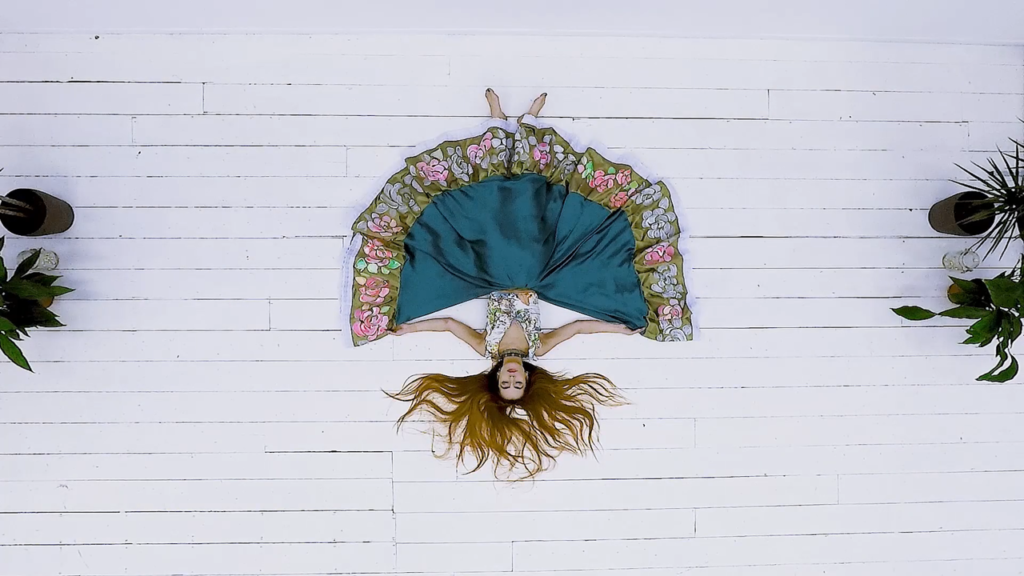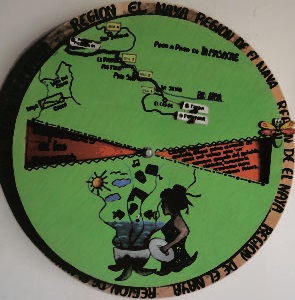
On 10 May 2020, a unique virtual museum for English and Spanish-speaking audiences was launched at the University of Liverpool as part of the Culture Unconfined digital festival and AHRC-funded MVR Research project, led by Professor Claire Taylor.
“A Museum for Me | Un Museo Para Mí” creates a space for survivors and exiles of the Colombian armed conflict to share stories, and helps make visible the work of the Colombian Truth Commission (la Comisión para el Esclarecimiento de la Verdad, la Convivencia y la No Repetición) with members of the Colombian diaspora.
Dr Cherilyn Elston, Lecturer in Latin American Cultural Studies at the University of Reading, and a member of the UK and Ireland Hub in support of the Colombian Truth Commission,[1] interviews Professor Taylor and Dr Lucia Brandi (MVR project), about this exciting new initiative.
Cherilyn: First can you just briefly tell us who or what the MVR project is?
Claire: MVR stands for Memory, Victims, and Representations of the armed conflict in Colombia – it’s an AHRC project led by Liverpool with research partners in Colombia and the UK. We’re just drawing to a close, in terms of the initial investigations, but entering a really exciting new phase, focusing on translating MVR findings into specific actions with lasting impact. For example, we are working with community actors to address the invisibility or silencing of particular social groups within the conflict, and gender-blind or identity-blind representations of violence. A Museum for Me is one of the legacies of the MVR project, thanks to the UK’s Global Challenges fund (GCRF) and the Museo Nacional de Colombia in Bogotá.
Cherilyn: Addressing the invisibility of particular social groups within the conflict is hugely important, and chimes with my own research on gender and the armed conflict in Colombia, as well as my work with Colombian migrants and exiles living abroad who have been historically silenced in peacebuilding processes and mainstream narratives of the conflict. How would you describe A Museum for Me?
Lucia: A Museum for Me began life as a very simple idea and single product- we worked with the designer at the Museo Nacional de Colombia, Camilo Sánchez, to create craft kits for building your own mini-museum. We ran workshops for adults and children in the UK and Colombia, in which participants created mini-museums and placed objects and exhibits inside that tell their own stories. The workshops were really popular, and some of the creations were even displayed at the Tate Liverpool and the Museo Nacional de Colombia for our inaugural exhibition on 25 February this year. The workshops seem to function on different levels for different participants – for embedding memory, for consciousness-raising, honouring loved ones, as focus groups, inter-generational communication, or for just reflecting on what is important to you – the more the museum kits are used, the more functions they reveal. Now we have a whole range of products, but I think the most meaningful activities are always the simplest.


Cherilyn: Why the move to a virtual museum? Is that just a response to lockdown?
Lucia: Yes and no – I think we were always planning a digital platform for the project, but obviously lockdown has accelerated our actions. In fact, I think it has led us to a whole new layer of community engagement that complements face to face workshops. A Museum for Me is no longer a set activity or product, but rather it exists as a nexus of virtual and physical spaces where victims, survivors, exiles, artists, human rights activists, researchers, museologists and NGOs can take centre-stage. People use the platform to communicate personal memories or relate the testimonies of others, clarify truths, showcase their social action, and intervene directly in the representation and discourses around their person and stories. These stories come in myriad formats, from plain narrative and text, to music, poetry, dance, visual arts – in essence, the character of A Museum for Me has been determined by its contributors, who include the UK Representative of the Colombian Truth Commission, and the many volunteers of the UK and Ireland Hub, who are reaching out to exiles and gathering testimonies as part of the peace process. For example, A Museum for Me supported the Commission’s efforts to include LGBT voices in analyses of truth, recognition and exile. And I would add that the platform is not delimited or exclusive – for example, we just recently saw in Refugee Week how Mujer Diáspora (a UK-based network of exiled Colombian women, which I know you are closely involved in) created content in English in order to connect with non-Spanish-speaking audiences, and celebrate an opportunity for making links between all survivors of war and conflict.
We’ve also had expressions of interest in our content from museums outside of Colombia, in other Latin American countries, which shows how the activities speak to many other national contexts. This energy and creativity are the momentum behind the site.
Cherilyn: You mention English-speaking audiences – so is most of the content in English?
Lucia: Absolutely not, in fact the site is a good example of the Spanish/English translanguaging practices of the diaspora, who move between codes freely according to the source / target / function / context of a speech act. At the same time, there is more than enough content in each language to suit monolingual English or Spanish-speaking audiences. I do think the language choices people make tells us something about how the platform is viewed and could be used in the future, within and beyond specific communities. In fact, all the materials are still available online for public use, and we’d very much encourage people to download the packs and create their own museums and other kits.
Cherilyn: As a collaborator with the UK Hub in support of the Colombian Truth Commission, I know that both the act of sharing, and of listening to, personal testimonies of human rights abuse, is highly sensitive terrain and potentially very distressing – why would anyone choose to contribute their story to A Museum for Me, or for that matter, choose to visit?
Lucia Yes that’s entirely true, but for me, I think it’s because we are living through an historic moment – the Colombian Truth Commission is starting to wind-up its reception of testimonies and getting ready to produce its final report – people know this opportunity will not come around again, and are more determined than ever that truths, which they have held close over decades, should reach the public domain, and that the fate of loved ones should be brought to light. That’s why the activism of the Colombian diaspora, and groups such as Mujer Diáspora has been so central to the shape of the Truth Commission, and it’s why A Museum for Me is so timely. It’s no contradiction to also describe A Museum for Me as joyous and inspiring – profound depths of grief are matched only by the heights of energy and creativity of contributors, and an unshakeable commitment to peace, well-being, and non-violence. It is actually a very life-affirming and uplifting experience, and an important reminder that violence is not the last word in the Colombian story.
Dr Lucia Brandi, Research Associate, Impact and Engagement, AHRC project ‘Memory, Victims, and Representation of the Colombian Conflict’, University of Liverpool
[1] The UK and Ireland Hub in support the Colombian Truth Commission was created to fulfil the mechanisms for truth, reparation and recognition of victims agreed in the peace accords. Made up of individuals and organisations from the Colombian diaspora and civil society, its members included trained interviewers, who take testimonies for the Truth Commission. Please contact nodoreinounidoeirlanda@gmail.com for more information.
